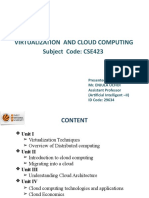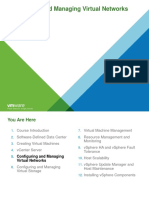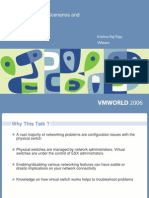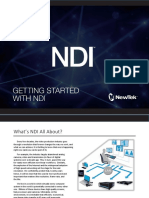0% found this document useful (0 votes)
65 views12 pagesINSA312-Module 2 (Modified)
The document discusses virtual networking and virtual switches. It defines virtual networking and switches, and explains how virtual switches control communication between virtual machines. It also outlines different types of virtual switches and advantages of virtual networking like lower costs and network isolation.
Uploaded by
alwkilmunirhCopyright
© © All Rights Reserved
We take content rights seriously. If you suspect this is your content, claim it here.
Available Formats
Download as PDF, TXT or read online on Scribd
0% found this document useful (0 votes)
65 views12 pagesINSA312-Module 2 (Modified)
The document discusses virtual networking and virtual switches. It defines virtual networking and switches, and explains how virtual switches control communication between virtual machines. It also outlines different types of virtual switches and advantages of virtual networking like lower costs and network isolation.
Uploaded by
alwkilmunirhCopyright
© © All Rights Reserved
We take content rights seriously. If you suspect this is your content, claim it here.
Available Formats
Download as PDF, TXT or read online on Scribd
/ 12




























































































